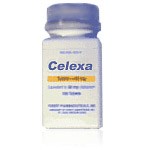Understanding Obsessive-Compulsive Disorder and How to Manage It


Obsessive-compulsive disorder (OCD) is a complex and often misunderstood mental health condition that significantly affects a person’s daily life, relationships, and overall sense of well-being. Characterized by persistent, unwanted thoughts (obsessions) and repetitive behaviors (compulsions), OCD can range in severity and take many forms. Although once thought to be rare, OCD is now recognized as one of the most common mental disorders, affecting millions of individuals worldwide across all age groups.
What Is Obsessive-Compulsive Disorder?
OCD is a chronic mental health disorder defined by a cycle of obsessions and compulsions. Obsessions are intrusive and distressing thoughts, urges, or images that repeatedly enter a person’s mind, often causing significant anxiety. These obsessions are not simply excessive worries about real-life problems but are instead irrational and unwelcome. Common examples include fears of contamination, harming others, or an intense need for symmetry or order.
To alleviate the anxiety caused by these obsessions, individuals engage in compulsions — ritualistic or repetitive behaviors or mental acts. These may include washing hands excessively, checking locks multiple times, counting objects, repeating words silently, or arranging items in a particular order. While these actions are intended to prevent a feared event or reduce distress, they are often not realistically connected to the outcomes they are meant to avert. Furthermore, the relief provided is temporary, reinforcing the cycle.
OCD is more than just a preference for neatness or an occasional intrusive thought. The condition can become so time-consuming and emotionally draining that it interferes with work, school, and relationships. It is classified as a long-term disorder that typically begins in adolescence or early adulthood, although symptoms can appear in childhood.
What Are the Three Main Symptoms of OCD?
While OCD manifests in diverse ways, three core components are generally present:
- Obsessions – These are recurring, persistent, and unwanted thoughts, impulses, or images that provoke distress or anxiety. Unlike ordinary worries, obsessions are intrusive and often conflict with the person’s values or desires. For example, someone might be obsessed with the idea that they left the stove on, even after checking multiple times, or might constantly fear they accidentally harmed someone without any rational evidence.
- Compulsions – In response to these obsessions, individuals perform compulsive actions in an attempt to neutralize or reduce the distress. These can be physical (like excessive cleaning, locking and unlocking doors) or mental (such as repeating words or silently praying). Compulsions may bring temporary relief but ultimately reinforce the obsessive-compulsive cycle.
- Significant Impact on Functioning – The symptoms are severe enough to consume a large part of a person’s time — often more than an hour each day — and interfere with normal activities. People with OCD may avoid situations that trigger their obsessions or feel ashamed of their thoughts and rituals, further contributing to social withdrawal and emotional distress.
Can I Live a Normal Life with OCD?
Living a "normal" life with OCD is not only possible but increasingly achievable with proper treatment, support, and coping strategies. However, it's important to acknowledge that OCD is a chronic condition. For many, it doesn't completely disappear but becomes manageable to the point that its impact on daily life is significantly reduced.
A key aspect of living well with OCD is early diagnosis and comprehensive treatment. Individuals who learn to recognize their symptoms and understand the nature of their disorder can actively participate in their own recovery. With professional help, they can build coping skills, develop healthier thought patterns, and learn to resist compulsive behaviors. Over time, the intensity and frequency of symptoms may decrease, allowing for a fulfilling and productive life.
Support from family and friends plays a crucial role. Open communication about the condition, coupled with patience and understanding, can help reduce the stigma that often surrounds OCD. People with OCD are not "crazy" or dangerous — they are struggling with a real and treatable condition.
Furthermore, accommodations at school or work, such as flexible scheduling or access to quiet spaces, can help reduce stress and enhance performance. As with any chronic illness, managing OCD requires commitment, but it does not preclude one from achieving personal or professional goals.
Is OCD Treatable?
Yes, OCD is treatable, and a combination of therapies often leads to significant improvement. The two primary treatment approaches are cognitive-behavioral therapy (CBT), particularly a method called exposure and response prevention (ERP), and medication.
ERP involves gradually exposing individuals to the source of their obsessions while helping them resist the urge to perform compulsions. Over time, this process reduces anxiety and weakens the obsessive-compulsive cycle. This approach is widely regarded as the gold standard in psychotherapy for OCD.
Pharmacological treatment typically includes the use of selective serotonin reuptake inhibitors (SSRIs), which are antidepressants known to reduce OCD symptoms by increasing the level of serotonin in the brain. These medications don’t cure OCD but can significantly decrease the intensity of obsessions and compulsions, making therapy more effective.
In some cases, individuals may require long-term medication or combination therapy. If first-line treatments are ineffective, other approaches such as intensive outpatient programs, support groups, or even newer methods like deep brain stimulation may be considered. The treatment plan should be individualized, taking into account the severity of symptoms, response to previous treatments, and personal preferences.
The Role of Celexa in the Treatment of OCD
Celexa, known generically as citalopram, is an SSRI primarily prescribed to treat depression but also used off-label for obsessive-compulsive disorder. While it is not FDA-approved specifically for OCD, many clinicians include it in treatment regimens, especially if other SSRIs cause side effects or are not effective.
Citalopram works by increasing the availability of serotonin in the brain, which is believed to play a key role in regulating mood, anxiety, and thought patterns. In individuals with OCD, serotonin levels are often dysregulated, contributing to the persistence of intrusive thoughts and compulsive behaviors. By restoring balance to this neurotransmitter system, Celexa can help reduce the intensity and frequency of symptoms.
The effectiveness of Celexa in treating OCD varies from person to person. Some patients report significant improvement in mood and anxiety, leading to better control over obsessions and compulsions. For others, it may take several weeks to notice an effect, and dosage adjustments are sometimes necessary.
Like all SSRIs, Celexa comes with potential side effects, including nausea, dry mouth, sleep disturbances, and sexual dysfunction. In rare cases, it may cause increased anxiety in the initial stages of treatment or interact with other medications. Therefore, it’s important for patients to follow their doctor’s instructions closely and attend regular follow-ups to monitor progress and side effects.
When used alongside CBT, Celexa can be a valuable tool in a comprehensive treatment plan. Medication alone is not typically sufficient for long-term management, but it can provide the emotional stability needed to engage fully in therapy.
Final Thoughts
Obsessive-compulsive disorder is a challenging condition, but it is far from hopeless. With increasing awareness, advanced therapeutic approaches, and effective medications like Celexa, many people with OCD are living balanced and rewarding lives. Early diagnosis, patient education, consistent treatment, and emotional support from loved ones all contribute to improved outcomes.
OCD is not a character flaw or a personal weakness—it is a medical condition rooted in the brain’s chemistry and cognitive processes. Treating it with the same seriousness as any other chronic illness opens the door to recovery and long-term well-being. Whether the goal is to reduce symptoms, regain independence, or simply improve day-to-day quality of life, help is available—and it works.
Medically Reviewed by Dr. Mevan Nandaka Wijetunga, MD
(Updated at Jun 14 / 2025)

